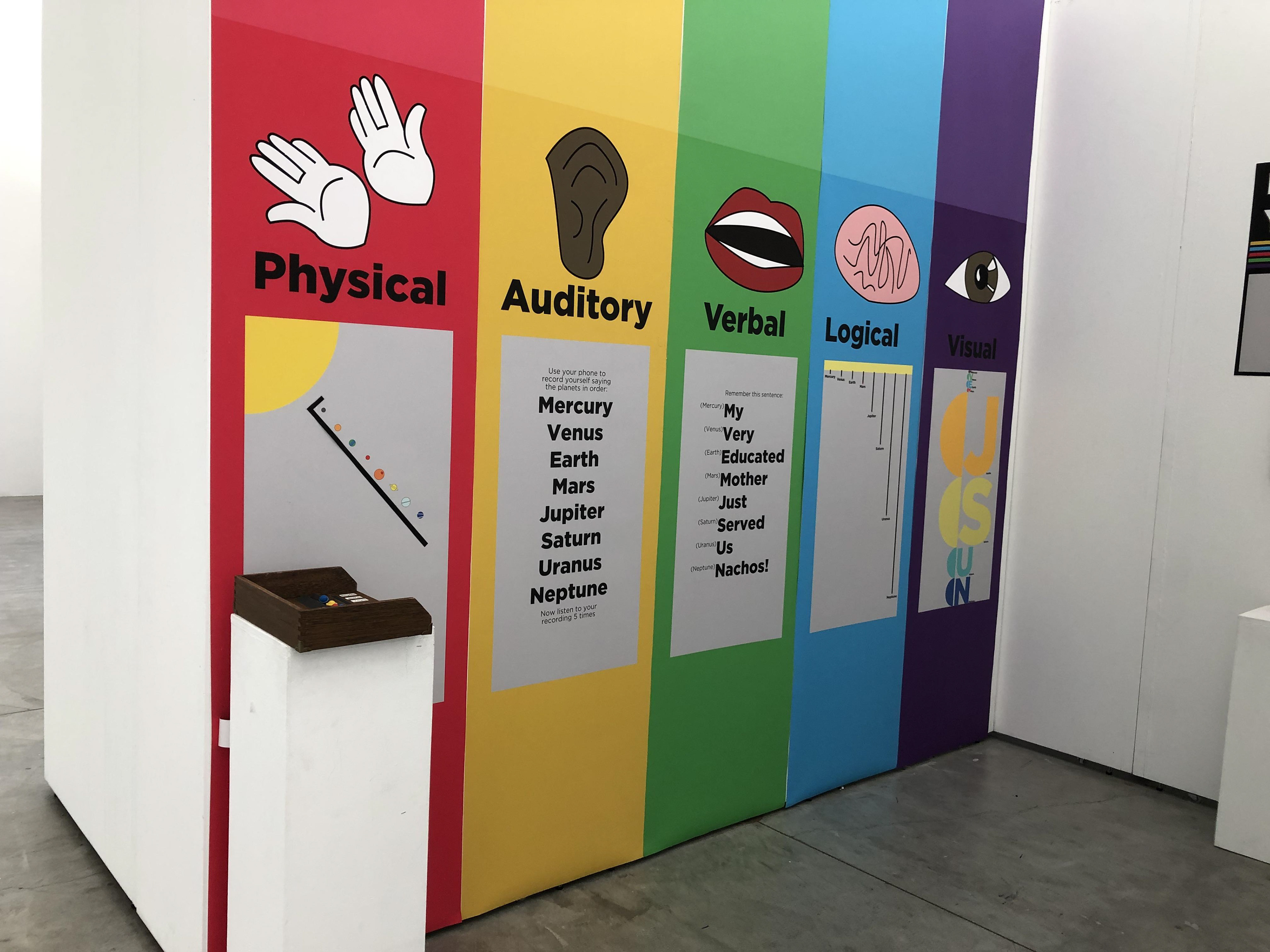

~~ Scroll down further to see the full story of the thesis and my design process for this project ~~
My first idea was using a physical interactive game to showcase how well games can teach information. The scope of this idea ultimately was too high given the time limitations I was facing. Gamification in a physical space was still something I had a strong interest in, and I knew I was going to have an interactive element somewhere in the exhibit.
Eventually, I decided to refocus my approach. In order for gamification to be welcomed into the classroom, I would need to convince the viewer that there is more than one way to teach something, and that people have a preference for how they learn. My resulting concept was to create a space that allows the viewer to learn their own preferences by presenting the same information in a variety of different ways.
From here, I went to work designing and creating the assets required for the physical exhibition. From the above concepts, I created more simplified and interactive experiences for each learning style. Additionally, instead of having the visitors take something with them (the pamphlet concept), they could instead leave something at the exhibit. I designed a thumb-tack polling system for viewers to share with future viewers their preferred learning styles. This demonstrated a handful of things: First, the viewer understood the established color-coding system that represented the unique learning styles. Second, the viewer was immersed enough to not only go through the space and understand the information, but also to determine and share their own preferred learning style. Third, after the exhibit had closed, the final tally for the poll was a nearly even split between the various learning styles, with around 30 tallies for each option. Visual learning had the most votes with 36, and Auditory had the least votes at 28.
What I Learned
Fitting the theme of my thesis nicely, there was a lot I learned from the design process. The most powerful lesson learned was how information should be translated into a physical space successfully, and how difficult it is to prevent ambiguity and confusion. Informational hierarchy was a concept I needed to master in order to ensure that most viewers would move through the space in the intended way, while also allowing for viewers who break these expectations to still understand the information. Additionally, I learned how difficult it is to include interactive aspects within an art gallery space, as the expectation in such a context is that the viewer is not allowed to touch anything.

